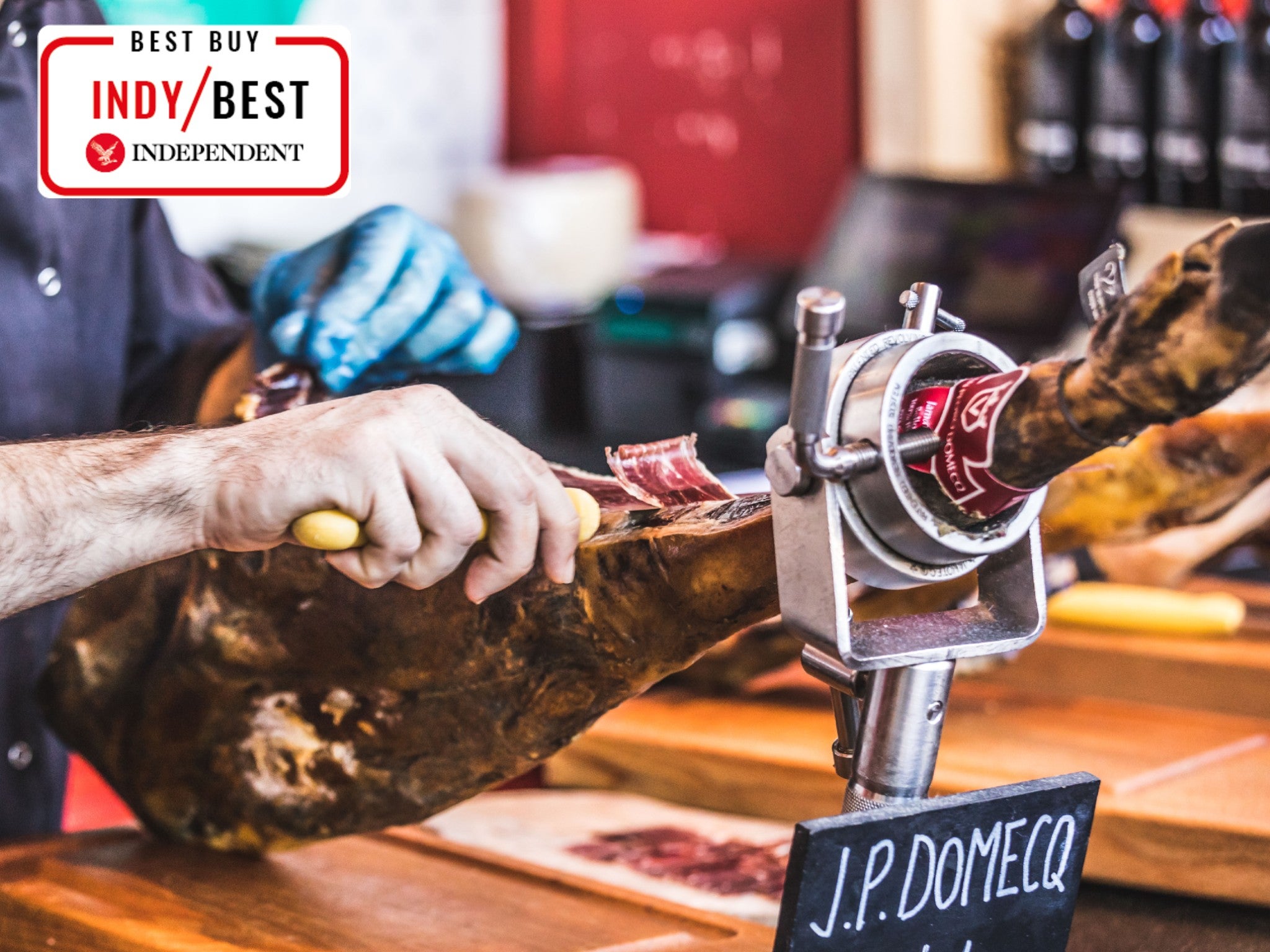
The Independent's journalism is supported by our readers. When you purchase through links on our site, we may earn commission. Why trust us?
8 best jamón ibérico hams for a hand-carved taste of Spain
Bred with care and cured for up to two years, ibérico’s exquisite flavour speaks for itself
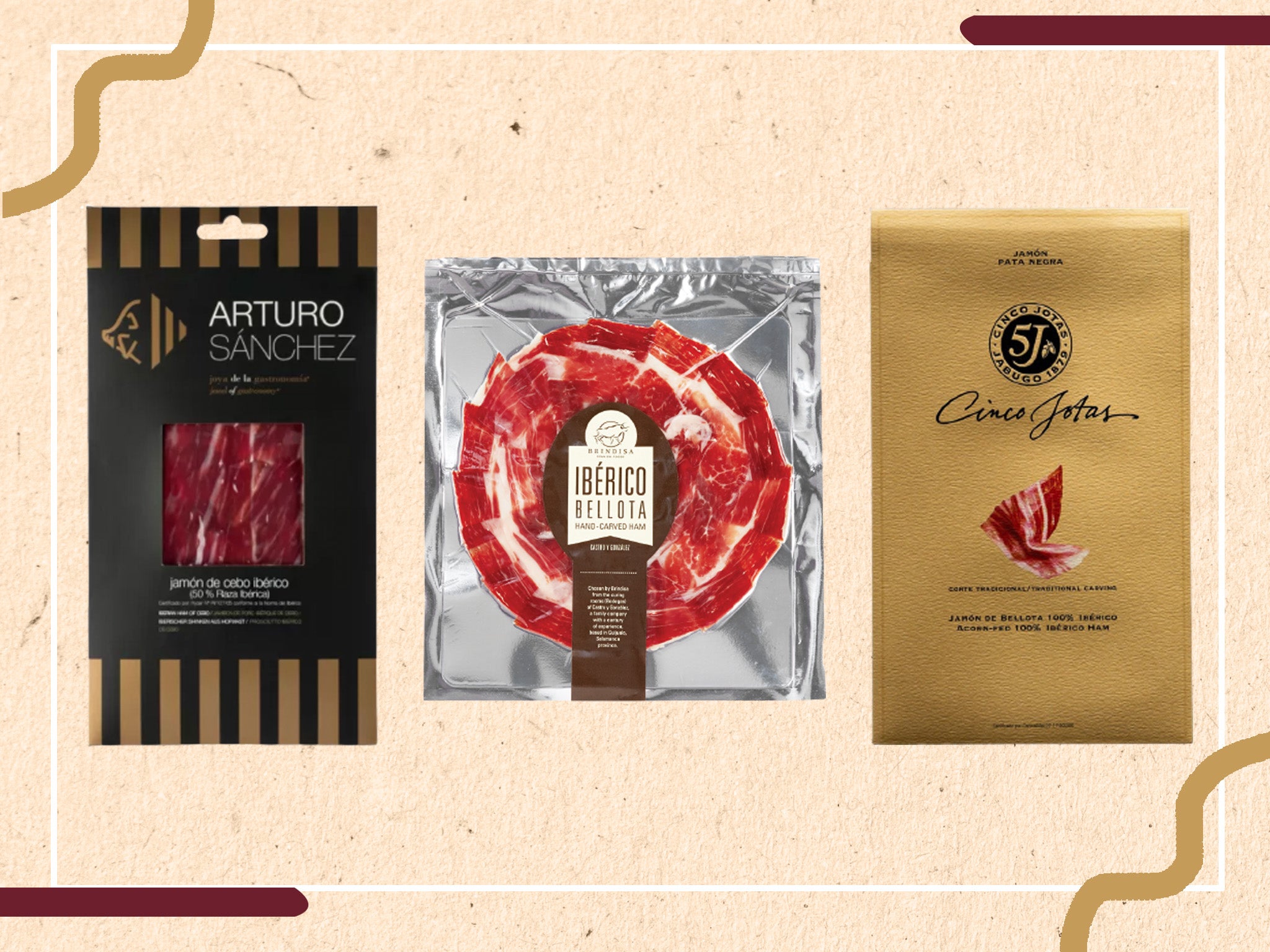
Jamón ibérico, Spain’s iconic ham, is one of the great world foods. At its best, it comes as translucent ruby-purple slivers, so thinly sliced you can see through it to the inscription on the knife.
The thin edge of creamy fat melts on the tongue, mingling with the complex, nutty flavour of the pork: a perfect bite of rich, luscious umami. Spain produces more than 40 million hams a year but while there are some perfectly acceptable jamón serrano, made from white pigs, the ibérico is the real stuff.
Sadly, plenty of sins are committed in its name, and the classification system can be opaque. To be called ibérico, the ham must come from a Black Iberian Pig, or a cross-breed that’s at least 50 per cent ibérico. Within that there are four labels: black, red, green and white, in descending order of prestige.
To qualify for the black label, pata negra (black hoof), the pig must be a pure ibérico breed and fed exclusively on acorns (bellota is acorn in Spanish). Red labels are for more than 50 per cent crossbreeds fed on acorns. The acorns come from holm oaks, which dominate the dehesa, the grazing lands that cover large swathes of western Spain and Portugal.
Green label is a cross-breed fed partly on acorns, and white label is a crossbreed fed no acorns. The grain-fed pigs have a saltier, chewier quality, which some people prefer.
Each pig can eat up to 10kg of acorns per day and needs plenty of exercise. After slaughter they must be cured for up to two years, which helps explain why the ham can seem eye-wateringly expensive. This is meat as it should be: happy pigs raised with care, sold and served in a way that accentuates its quality.
Read more:
While you can buy whole hams, and they make a spectacular centrepiece for any kitchen, carving can be difficult for the unpractised. Sliced too thickly, it can lose its subtlety, or worse, too much skin can leave an acrid, fatty flavour on the tongue. It is easier to buy it hand-carved and vacuum packed, then served at room temperature, so the fats are just starting to shine.
You can trust our independent reviews. We may earn commission from some of the retailers but we never allow this to influence selections, which are formed from real-world testing and expert advice. This revenue helps us to fund journalism across The Independent.
Juan Pedro Domecq, D.O Jabugo, 100% bellota 100g

Cured for a whopping 42 months, Juan Pedro Domecq’s ham, from Jabugo in south-western Spain, has won dozens of awards. It’s not hard to see why. A rich, sweet succulent, complex jamon, available through Iberica, which also runs tapas bars and restaurants. A judge at the Great Taste awards said it was “very near perfection,” and who are we to disagree.
Brindisa 75% jamón ibérico de bellota, 100g
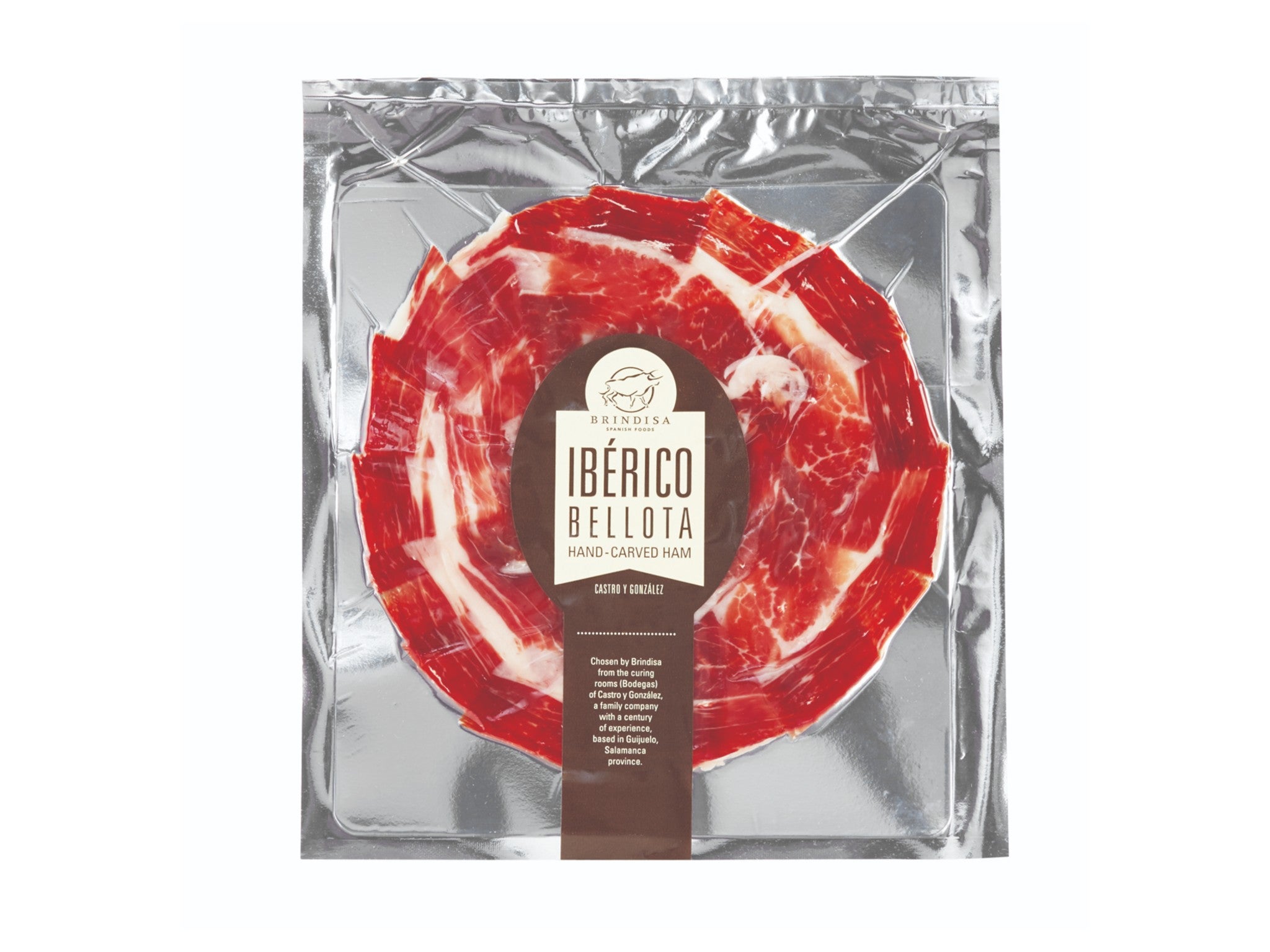
Brindisa have been synonymous with excellent Spanish food in the UK for more than three decades, and many of their products are now widely available in delis and smart-supermarkets. This 75% iberico ham has a lovely balanced flavour. A great all-rounder.
The Black Hoof hand-carved 100% ibérico de bellota, 100g

If you want to go straight to the top, look no further than this top-of-the-line bellota, from Edinburgh-based deli and importer, The Black Hoof. Hand-carved and served in a foil pack to make it easier to remove for serving, this has all the sweetness and nuttiness you could ask for.
The Gourmet Market jamón ibérico cebo 75%, 100g
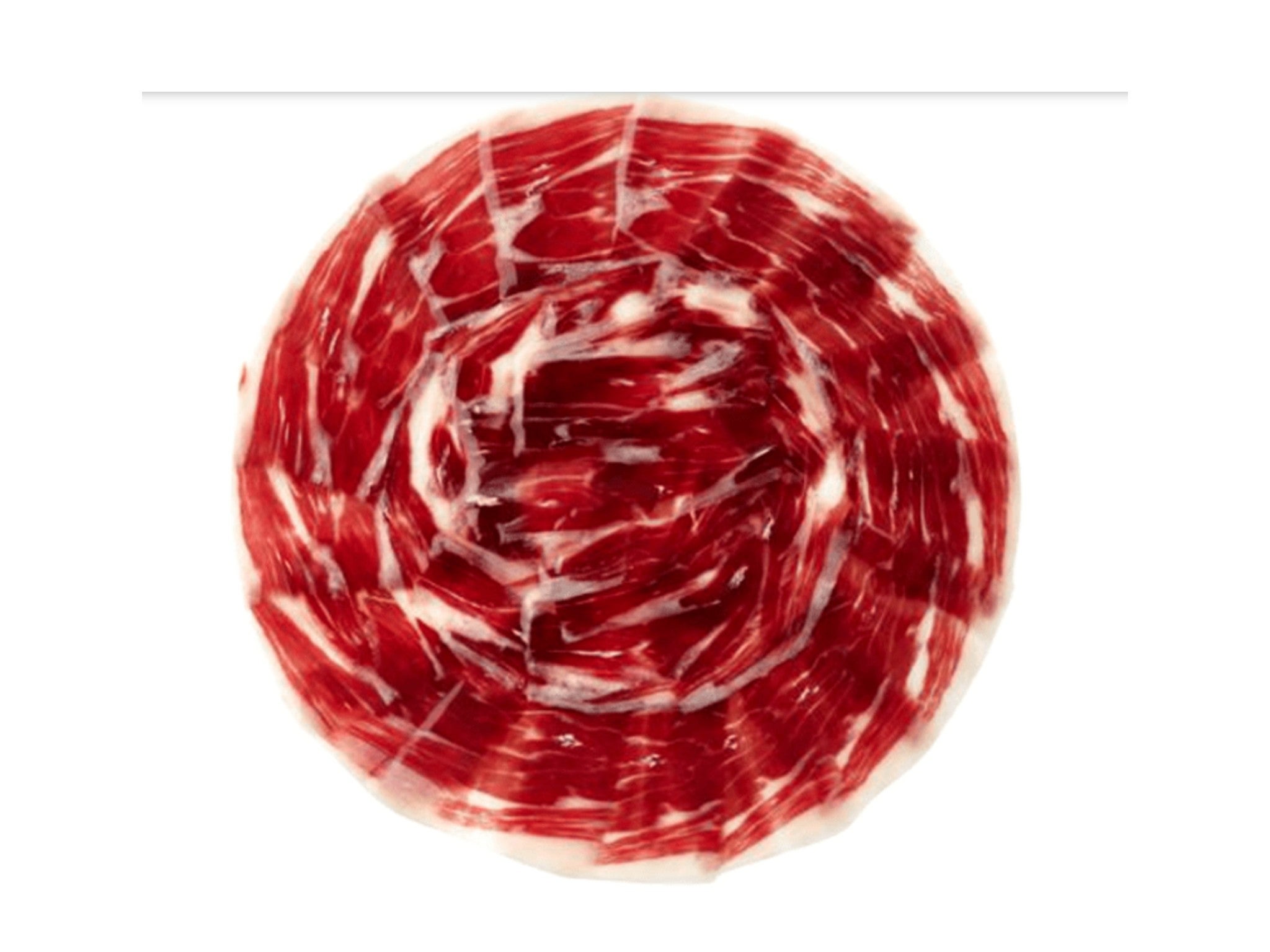
This green label jamón de cebo has a great balance of acorn and grain flavours, at a slightly lower price point than some of the top-of-the-range pata negra options. Some ham fans claim to prefer green-label jamon, which has a slightly punchier, saltier hit, to the intense nuttiness of the 100% Bellota stuff. Ham isn’t always about following the money.
Waitrose, No.1 hand-carved jamón ibérico de bellota, 55g
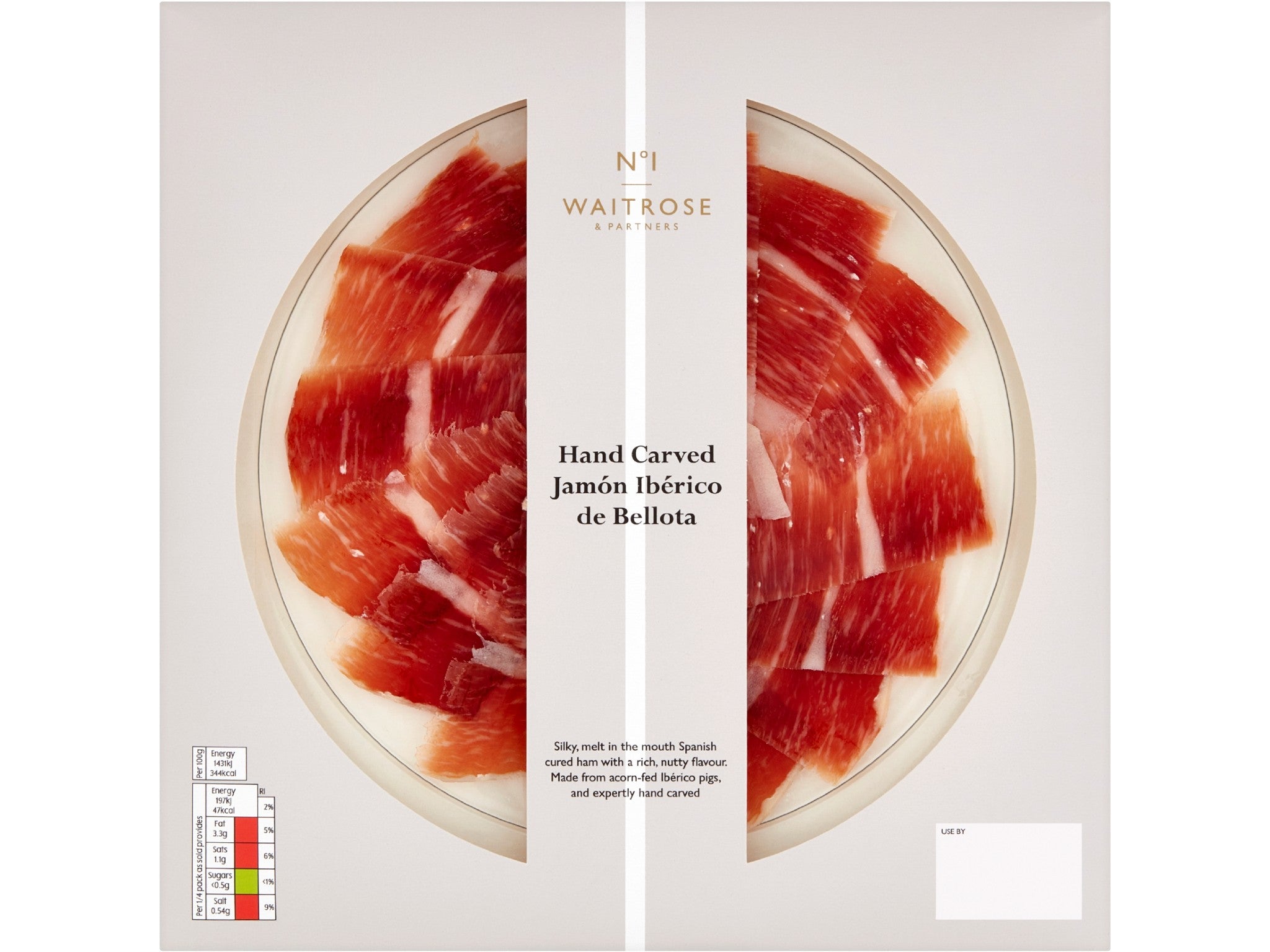
Waitrose does its own jamón ibérico under its No. 1 in-house label. We preferred the foil backed packaging of the ibérica ham, but this is a good smaller-portion option if you are on your way to a picnic and want to look sophisticated.
Arturo Sánchez jamón ibérico de cebo, 80g
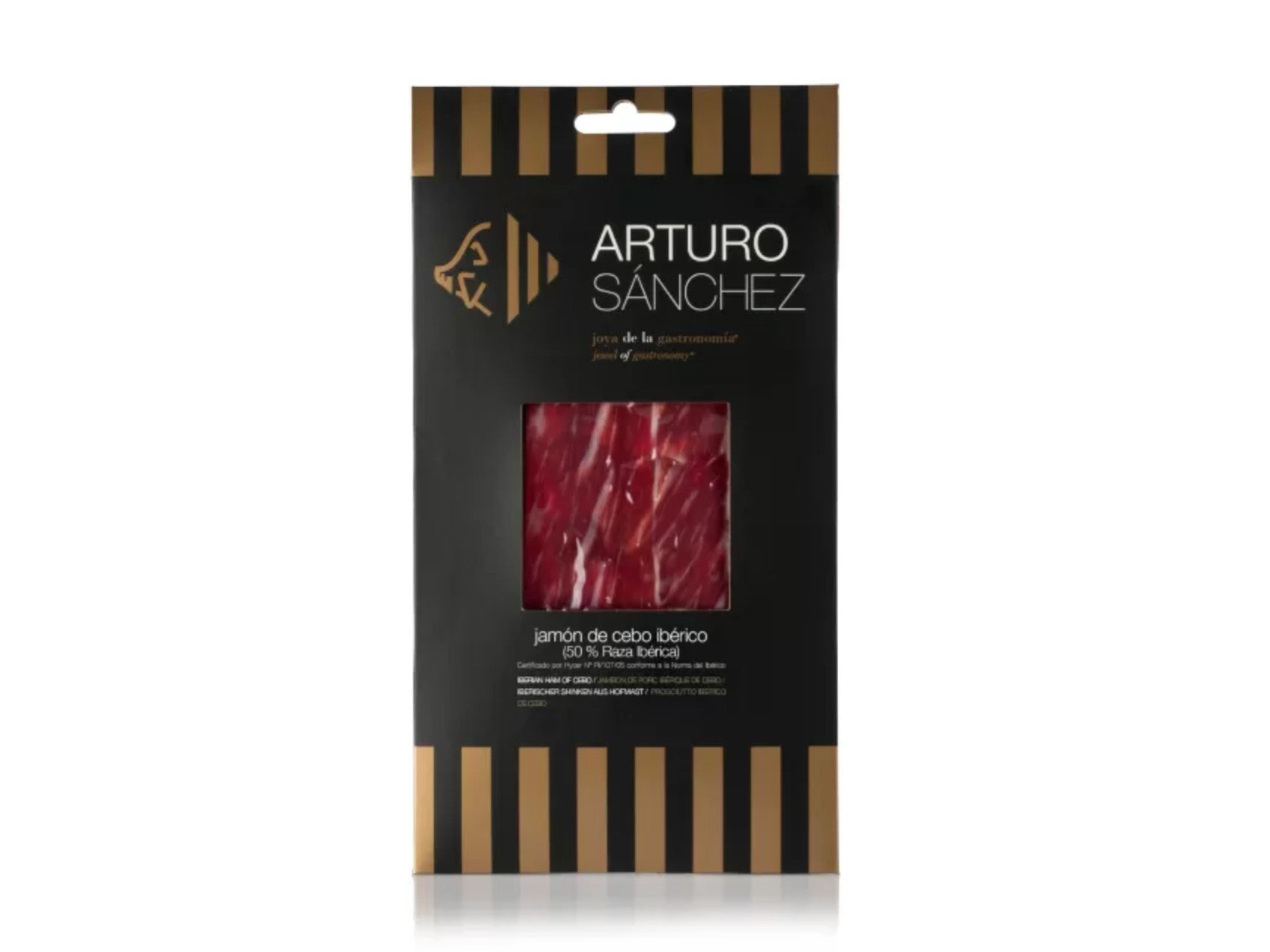
Another jamón de cebo, this time from Arturo Sanches, a family business which has been making ham in the Candelario mountains, outside Salamanca in western Spain, for more than 100 years. Serve with a glass of sherry for a perfect pre-dinner snack.
Cinco Jotas jamón ibérico de bellota, 70g
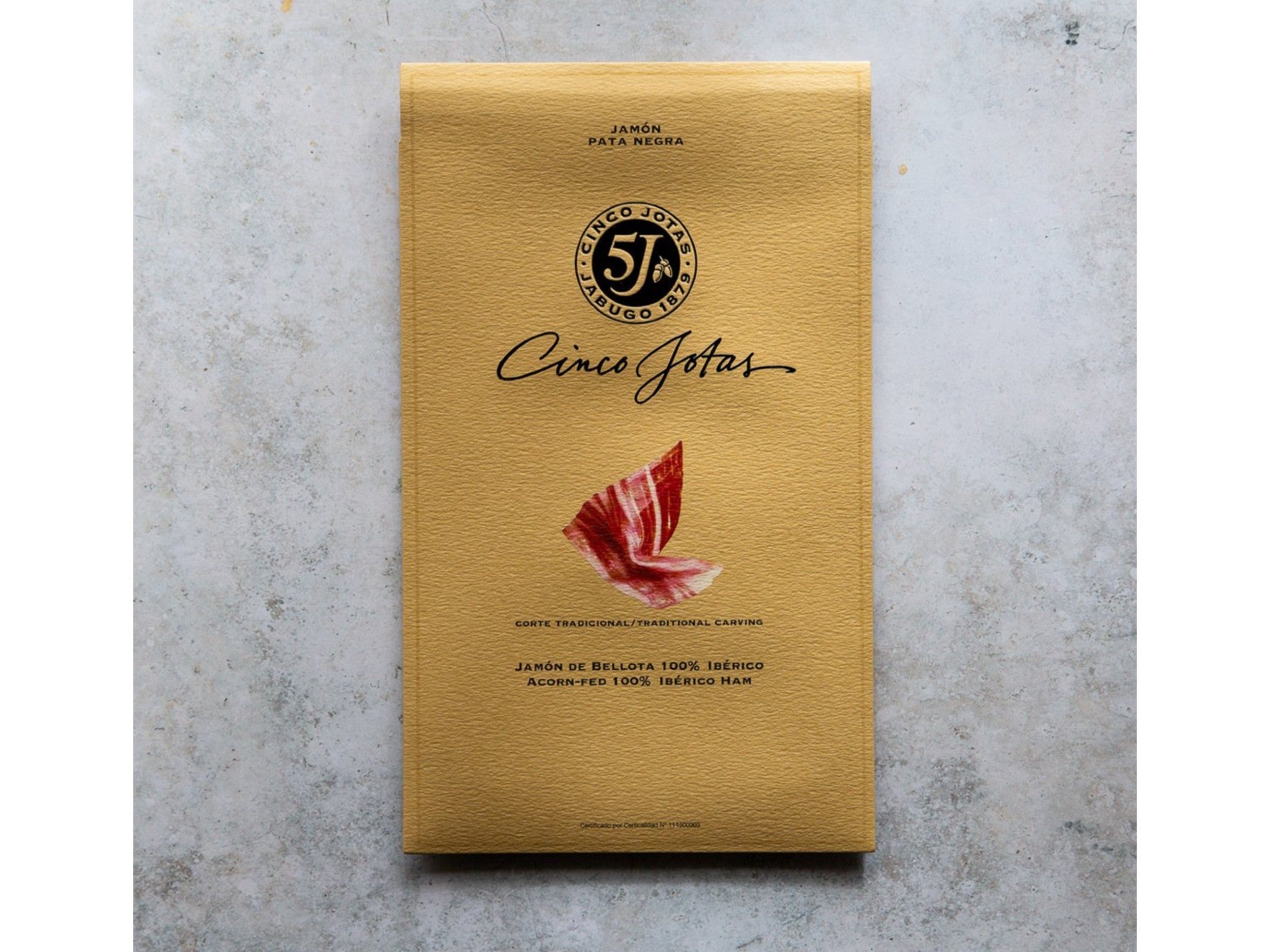
At £22 for 70g, Cinco Jotas is top-of-the-range price-wise, but it is also top-of-the-range ham-wise, the choice for many top Spanish chefs, including José Pizarro. Since 1879, the firm has been making hams from pigs raised in Jabugo, and their expertise is obvious in this delicately marbled, deeply flavoured product, available through Fine & Wild.
Extremadura white-label jamón ibérico
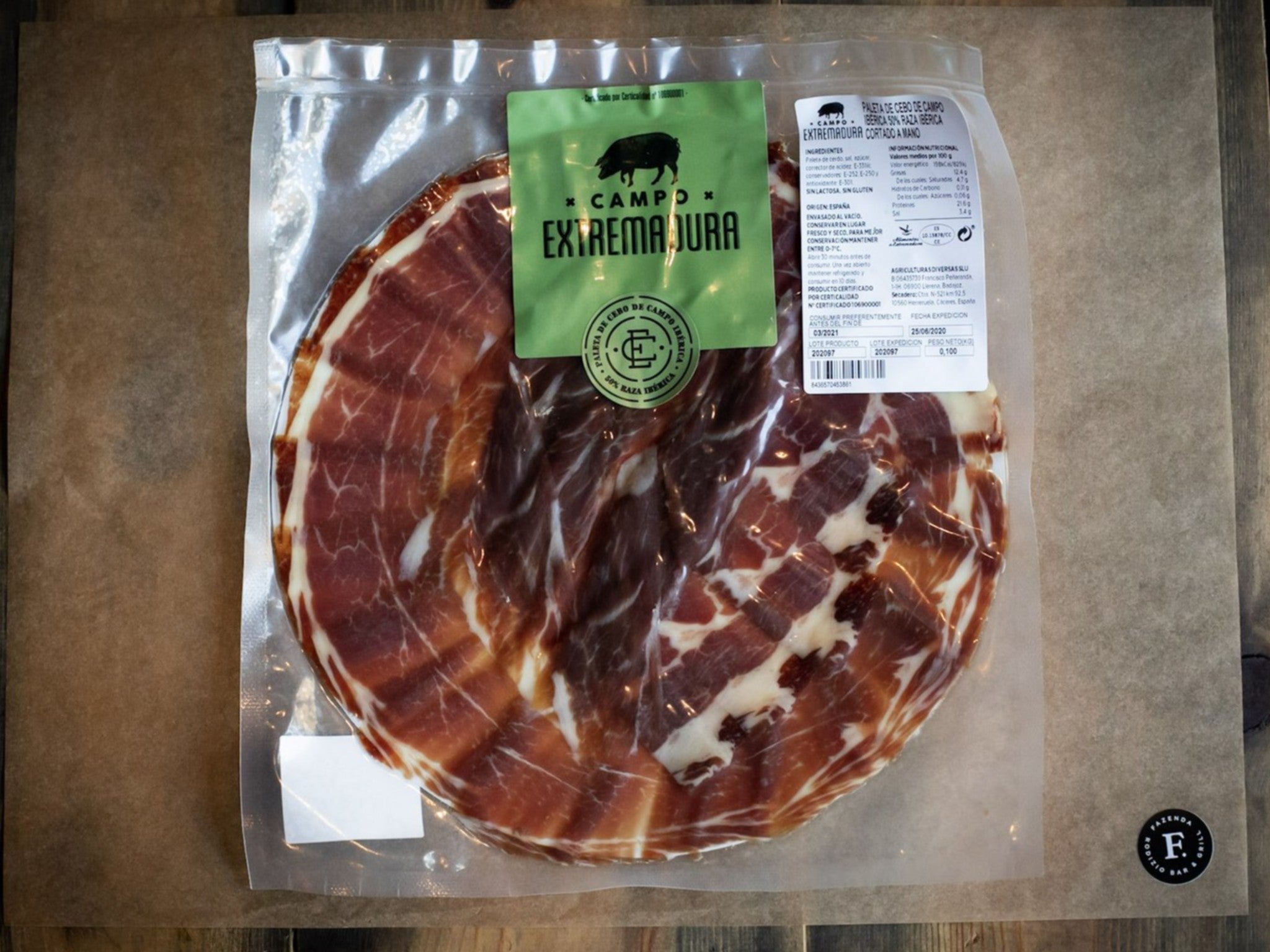
Traditionally, most advice is to skip the white-label jamón ibérico, which is made from shoulder rather than leg and is sometimes thought to lack the subtlety of the acorn-fed products. But some may prefer it – it’s cheaper and has still been cured and aged to a high standard. For an entry-level jamón ibérico, try this one from Extremadura. After a few sherries you won’t be able to taste the difference, anyway.
The verdict: Jamón ibérico
We suspect only a trained ham master could tell the difference between The Black Hoof, Juan Pedro Domecq and Cinco Jotas 100% jamón ibérico. They all deliver exceptional flavours, the taste of a product that has been honed over hundreds of years.
More important is serving them correctly, nicely laid out and warmed to room temperature, to get the fats loosened. Close your eyes and you could be on the Spanish plain, drinking something cold and waiting for your croquetas.
Our tasters also liked the jamón ibérico de cebo from The Gourmet Market, which was a little less strongly flavoured, as well as cheaper, making it better for a crowd of non-obsessives.
For a sip of southern Europe, pour a glass from our selection of the best Spanish wines